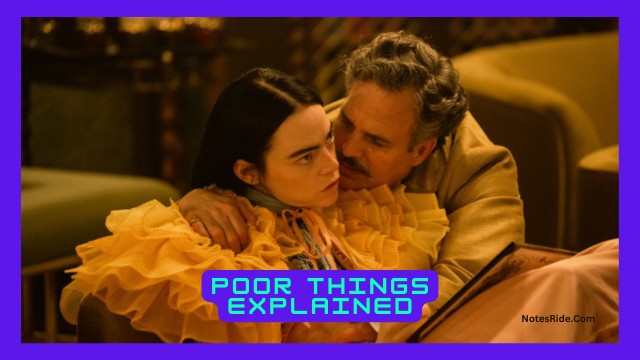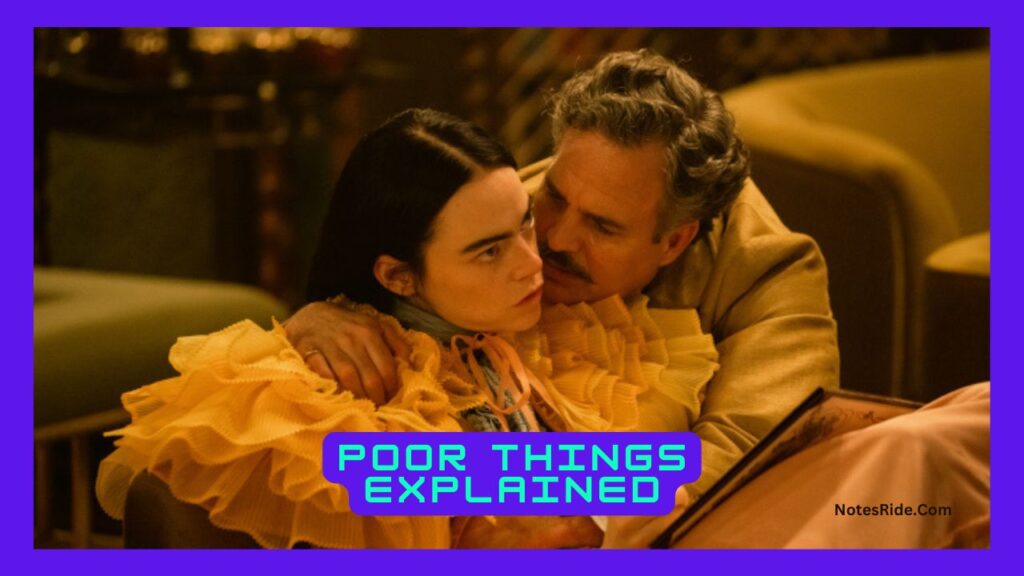Poor Things Synopsis | Poor Things Explained

Poor Things Synopsis: Yorgos Lanthimos’ Dazzling Exploration of Humanity
Yorgos Lanthimos, the mastermind behind cinematic gems like “Dogtooth,” “The Lobster,” and “The Favourite,” continues his fascination with extreme behavior set against pristine backdrops in his latest and arguably best work, “Poor Things.” This peculiar film, set in Victorian London, is a mesmerizing exploration of human connection, identity, and the struggle for autonomy.
The film centers around Bella Baxter, played with remarkable skill by Emma Stone, who resides in a tasteful townhouse with her father figure, Dr. Godwin Baxter, portrayed by Willem Dafoe. The narrative unfolds in a Victorian London that serves as a backdrop for a story that is both bizarre and entertaining. Bella, initially resembling a toddler in her behavior, grunting words and throwing plates, is an adult woman in search of enlightenment and genuine human connections.
The plot takes unexpected turns as various male characters attempt to mold Bella’s identity. Max McCandles (Ramy Youssef), one of Godwin’s students, falls in love with Bella, while Mark Ruffalo’s Duncan Wedderburn whisks her away on a lavish world tour filled with vigorous and humorously termed “furious jumping.” The clash between Bella’s pursuit of self-discovery and the patriarchal influences in her life forms the crux of the narrative.
Emma Stone delivers a performance of a lifetime, navigating the challenging role with finesse. From portraying Bella’s childlike origins to evolving into a sexually liberated woman, Stone’s portrayal is both technically precise and wildly alive. Mark Ruffalo adds a layer of humor as the charismatic yet buffoonish Duncan Wedderburn, providing a delightful contrast to Stone’s character.
The supporting cast, including Jerrod Carmichael, Hanna Schygulla, and Kathryn Hunter, further enriches the narrative, each contributing to Bella’s journey in unique ways. The specificity of the language, adapted from Alasdair Gray’s novel by Tony McNamara, adds a rhythmic poetry to the dialogue, evolving along with Bella’s intellectual growth.
Robbie Ryan’s cinematography masterfully captures the evolution of Bella’s character, transitioning from grainy black and white to lush color. The costume design by Holly Waddington and production design by Shona Heath and James Price contribute to the visual splendor, vividly reflecting Bella’s journey through detailed and imaginative choices.
“Poor Things” is a cinematic triumph, seamlessly blending the outlandish with historical imagery and exploring the complexity of human relationships. As the film unfolds, it becomes clear that its technical brilliance serves to enhance the emotional depth of Bella’s character. In the end, “Poor Things” isn’t just a visually stunning film; it’s a poignant and captivating exploration of self-discovery, autonomy, and the enduring power of human connection. Yorgos Lanthimos has once again crafted a masterpiece that stands as a contender for the best movie of the year.
- No One Will Save You Ending Explained
- Leave The World Behind Explained
- 30 Coins Season 2 Finale Explained
Is Poor Things Based on a Book ?

Yes, Poor Things is based on a book of the same name by Scottish author Alasdair Gray, published in 1992. The film, released in 2023, was directed by Yorgos Lanthimos and written by Tony McNamara.
The novel is a satirical take on the classic Victorian novel, exploring themes of gender, science, and identity. It follows the story of Archibald McCandless, a Victorian scientist who creates a beautiful woman named Bella after reviving her brain following a train accident. However, Bella comes with a unique quirk – a second brain with independent thoughts and desires.
The film adaptation stays true to the spirit of the novel while making some changes to the plot and characters. If you’re interested in learning more about the original story or comparing it to the film, I highly recommend reading the book.
So, yes, Poor Things is definitely based on a book, providing a rich and complex source material for the film to draw from.
